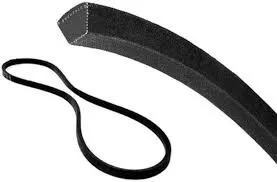- Arabic
- French
- Russian
- Spanish
- Portuguese
- Turkish
- Armenian
- English
- Albanian
- Amharic
- Azerbaijani
- Basque
- Belarusian
- Bengali
- Bosnian
- Bulgarian
- Catalan
- Cebuano
- Corsican
- Croatian
- Czech
- Danish
- Dutch
- Afrikaans
- Esperanto
- Estonian
- Finnish
- Frisian
- Galician
- Georgian
- German
- Greek
- Gujarati
- Haitian Creole
- hausa
- hawaiian
- Hebrew
- Hindi
- Miao
- Hungarian
- Icelandic
- igbo
- Indonesian
- irish
- Italian
- Japanese
- Javanese
- Kannada
- kazakh
- Khmer
- Rwandese
- Korean
- Kurdish
- Kyrgyz
- Lao
- Latin
- Latvian
- Lithuanian
- Luxembourgish
- Macedonian
- Malgashi
- Malay
- Malayalam
- Maltese
- Maori
- Marathi
- Mongolian
- Myanmar
- Nepali
- Norwegian
- Norwegian
- Occitan
- Pashto
- Persian
- Polish
- Punjabi
- Romanian
- Samoan
- Scottish Gaelic
- Serbian
- Sesotho
- Shona
- Sindhi
- Sinhala
- Slovak
- Slovenian
- Somali
- Sundanese
- Swahili
- Swedish
- Tagalog
- Tajik
- Tamil
- Tatar
- Telugu
- Thai
- Turkmen
- Ukrainian
- Urdu
- Uighur
- Uzbek
- Vietnamese
- Welsh
- Bantu
- Yiddish
- Yoruba
- Zulu
Nov . 05, 2024 13:09 Back to list
flat belts
The Importance of Flat Belts in Industrial Applications
Flat belts are a crucial component in the machinery of various industrial sectors. They are widely used for power transmission and are known for their efficiency, simplicity, and versatility. A flat belt is essentially a loop of flexible material that runs over pulleys to transmit motion and power from one part of a machine to another. Despite the evolution of technology and the introduction of various types of belts, flat belts remain an essential solution in numerous applications.
Construction and Material
Flat belts are typically made from durable materials such as rubber, fabric, or synthetic composites. The choice of material is critical, as it affects the belt's strength, flexibility, and longevity. For instance, rubber belts are commonly used for their excellent grip and resilience, while fabric belts or those made from synthetic fibers offer good flexibility and are less likely to stretch over time.
The construction of flat belts is designed to minimize friction and wear. They are usually flat and smooth, allowing for a greater contact area with the pulleys, thus enhancing power transmission efficiency. The absence of grooves or ribs helps in reducing the accumulation of debris and dust, making maintenance easier.
Advantages of Flat Belts
One of the main advantages of flat belts is their versatility
. They can be used in a wide variety of applications, from small home appliances to large industrial machines. Flat belts are particularly useful in applications where high speeds and long distances are involved, as they can be easily adjusted to accommodate different sizes of pulleys.flat belts

Another significant benefit is their ability to operate quietly and smoothly. Unlike chain drives or other types of belts that can produce noise, flat belts tend to run more silently, which is essential for environments that require minimal disruption.
Flat belts also offer ease of installation and replacement. Since they are not as complex as other drive systems, they can be quickly replaced with minimal downtime, which is a crucial factor in maintaining productivity in industrial settings.
Applications in Various Industries
Flat belts find applications in various industries, including manufacturing, agriculture, and transportation. In manufacturing, they are commonly used to drive conveyors, where the movement of goods and materials needs to be both efficient and reliable. In agricultural machinery, flat belts can be found in equipment like harvesters and tractors, where they help transfer power from the engine to various moving parts.
In the transportation sector, flat belts are integral to systems like escalators and moving walkways, where they facilitate smooth and effective movement of people and goods. Additionally, they are often employed in HVAC systems, ensuring efficient airflow through ventilation systems.
Conclusion
In conclusion, flat belts are an invaluable component of many industrial applications. With their simple design, materials that can withstand wear and tear, and versatility across different sectors, they play a critical role in ensuring the smooth operation of machinery. As industries continue to evolve, flat belts are likely to remain a reliable choice for power transmission, adapting to new technologies and methods while maintaining their core advantages. Their significance in modern engineering cannot be overstated, making them a staple component in the world of industrial machinery.
-
Korean Auto Parts Timing Belt 24312-37500 For Hyundai/Kia
NewsMar.07,2025
-
7PK2300 90916-T2024 RIBBED BELT POLY V BELT PK BELT
NewsMar.07,2025
-
Chinese Auto Belt Factory 310-2M-22 For BMW/Mercedes-Benz
NewsMar.07,2025
-
Chinese Auto Belt Factory 310-2M-22 For BMW/Mercedes-Benz
NewsMar.07,2025
-
90916-02660 PK Belt 6PK1680 For Toyota
NewsMar.07,2025
-
drive belt serpentine belt
NewsMar.07,2025

